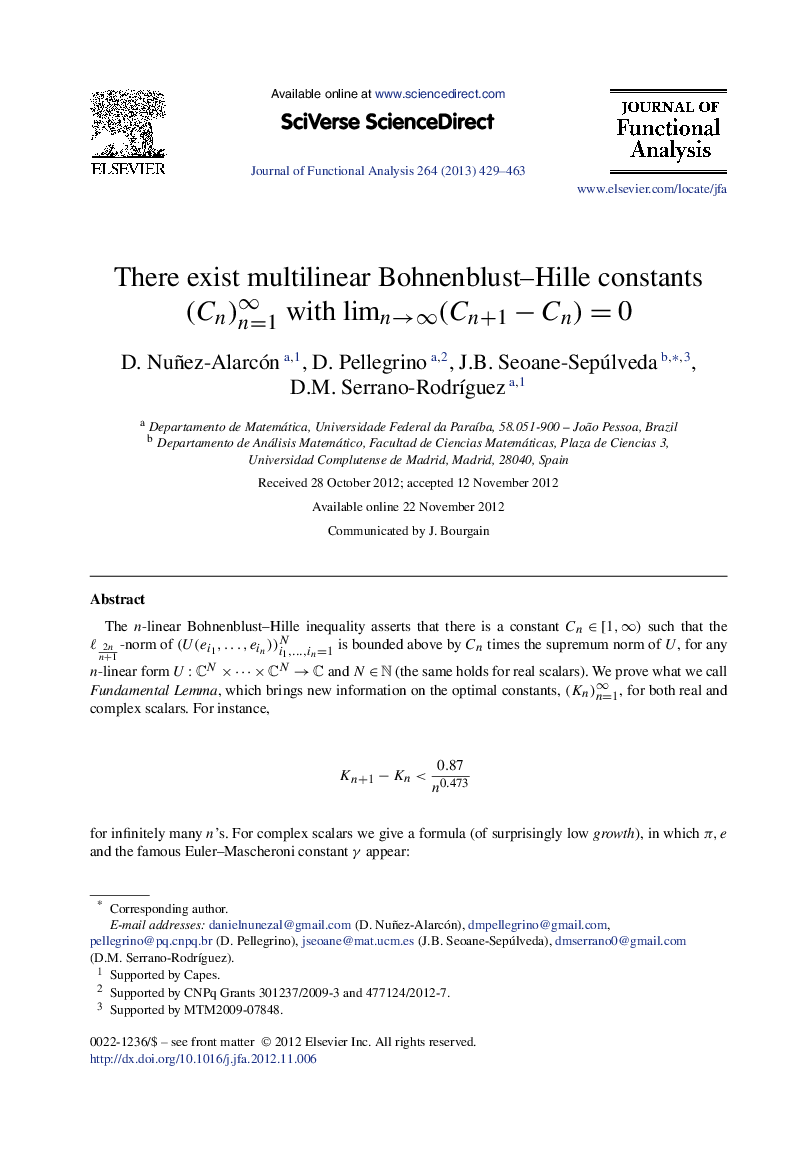| Article ID | Journal | Published Year | Pages | File Type |
|---|---|---|---|---|
| 4590996 | Journal of Functional Analysis | 2013 | 35 Pages |
The n -linear Bohnenblust–Hille inequality asserts that there is a constant Cn∈[1,∞)Cn∈[1,∞) such that the ℓ2nn+1-norm of (U(ei1,…,ein))i1,…,in=1N is bounded above by CnCn times the supremum norm of U, for any n -linear form U:CN×⋯×CN→CU:CN×⋯×CN→C and N∈NN∈N (the same holds for real scalars). We prove what we call Fundamental Lemma , which brings new information on the optimal constants, (Kn)n=1∞, for both real and complex scalars. For instance,Kn+1−Kn<0.87n0.473 for infinitely many nʼs. For complex scalars we give a formula (of surprisingly low growth ), in which π,eπ,e and the famous Euler–Mascheroni constant γ appear:Kn<1+(4π(1−eγ/2−1/2)∑j=1n−1jlog2(e−γ/2+1/2)−1),∀n⩾2. We study the interplay between the Kahane–Salem–Zygmund and the Bohnenblust–Hille (polynomial and multilinear) inequalities and provide estimates for Bohnenblust–Hille-type inequality constants for any exponent q∈[2nn+1,∞).
